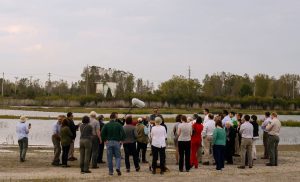May 17th, 2016 by iisg_superadmin
Milwaukee residents who have spent most of their lives near the sprawling Lincoln Park have stories to tell about how degraded the park had become. The Milwaukee River was hidden behind buckthorn and other brush and the fish that lived in the tainted water were too contaminated to eat.
Last week they shared some of these memories as part of a joyous celebration that the park and river have been cleaned up. State Representative Mandela Barnes described the park now as “good for people’s health.” At this event, a ceremonial ribbon was cut and the park was officially reborn.
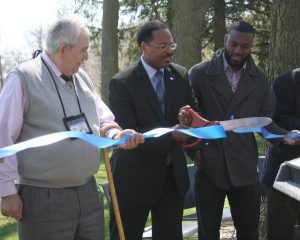
Lincoln Park is in the Milwaukee Estuary Area of Concern, designated by the International Joint Commission. Contamination in the park came from historic industrial and municipal discharges among other sources.
The cleanup of Lincoln Park got its biggest boost from the Great Lakes Legacy Act, which provided federal matching funds from the U.S. Environmental Protection Agency to share the project’s cost with Wisconsin Department of Natural Resources (DNR) and Milwaukee County Parks. Agency representatives, as well as local officials and residents, were on site to celebrate this success story.
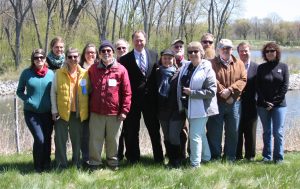
Over a four year period, 171,000 cubic yards of sediment laced with an alphabet soup of contaminants—PCBs, PAHs, and NAPLs—were removed from targeted zones in the river and 12.5 acres of shoreline were restored. Commenting the time and work that went into this remediation and restoration, Cameron Davis, EPA senior advisor to the administrator, described the project partners as more persistent than the contaminants themselves.
Throughout the process, Caitie Nigrelli, IISG environmental social scientist was on the ground, keeping the community informed, but also facilitating residents to take some ownership of the park. Nigrelli helped a volunteer organization get started—Friends of Lincoln Park—and joined in the group’s one year anniversary last fall.
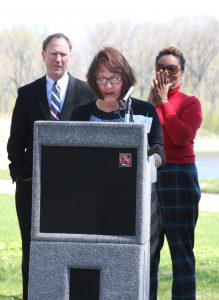 Anne Stadler Vaillancourt, a leader of the Friends group, spoke at last week’s event and a number of members were there to set up, take down, and enjoy the festivities. The organization is enjoying success and is ready to grow in membership. They recently held a volunteer cleanup day at the park and more than 100 people showed up. They have two upcoming Weed Out events to remove invasive species on May 14 and May 28.
Anne Stadler Vaillancourt, a leader of the Friends group, spoke at last week’s event and a number of members were there to set up, take down, and enjoy the festivities. The organization is enjoying success and is ready to grow in membership. They recently held a volunteer cleanup day at the park and more than 100 people showed up. They have two upcoming Weed Out events to remove invasive species on May 14 and May 28.
Stadler Vaillancourt expressed to the morning’s participants that the Friends of Lincoln Park are committed to take care of the park for the long term.
Also in attendance were: Kevin Haley, landscape architect and John Dargle, Jr., director, both of Milwaukee County Parks; State Sen. Lena Taylor; State Rep. David Brown; Theo Lipscomb, chairman of Milwaukee County Board of Supervisors; and Ed Eberle, assistant deputy secretary of Wisconsin DNR.
April 12th, 2016 by iisg_superadmin
This year, the National College Sea Grant Program is celebrating it’s 50th anniversary, and during the month of April we, along with the 32 other programs, are reaching out to our former (and current) Knauss Fellows to find out how their experience has shaped their career and impacted their lives.
So what better way to start then by chatting with our first-ever fellow, Molecular Ecologist and Fish Conservation Geneticist (and University of Illinois alumnus!) John Epifanio.
What do you remember most about your fellowship time?
While the fellowship really helped me in my career by affording me a more realistic view of how policy is developed, there are a few less formal aspects of my fellowship year that remain most memorable. First, I was genuinely fortunate to work for U.S. Senator John H. Glenn on Great Lakes issues. To work for an American hero in itself is pretty neat. He was in every way, the “real deal.” More importantly, the experience taught me a great deal about how public stature and personal capital can be used on behalf of a pretty worthy cause—in this case, the Great Lakes ecosystem. Second, I met my future spouse through the Knauss Fellowship program (she and I were both part of the class of ’90). I like to think that in this regard, the fellowship keeps on paying dividends. Last, I developed a handful of long-standing friendships that have endured the years and distance.
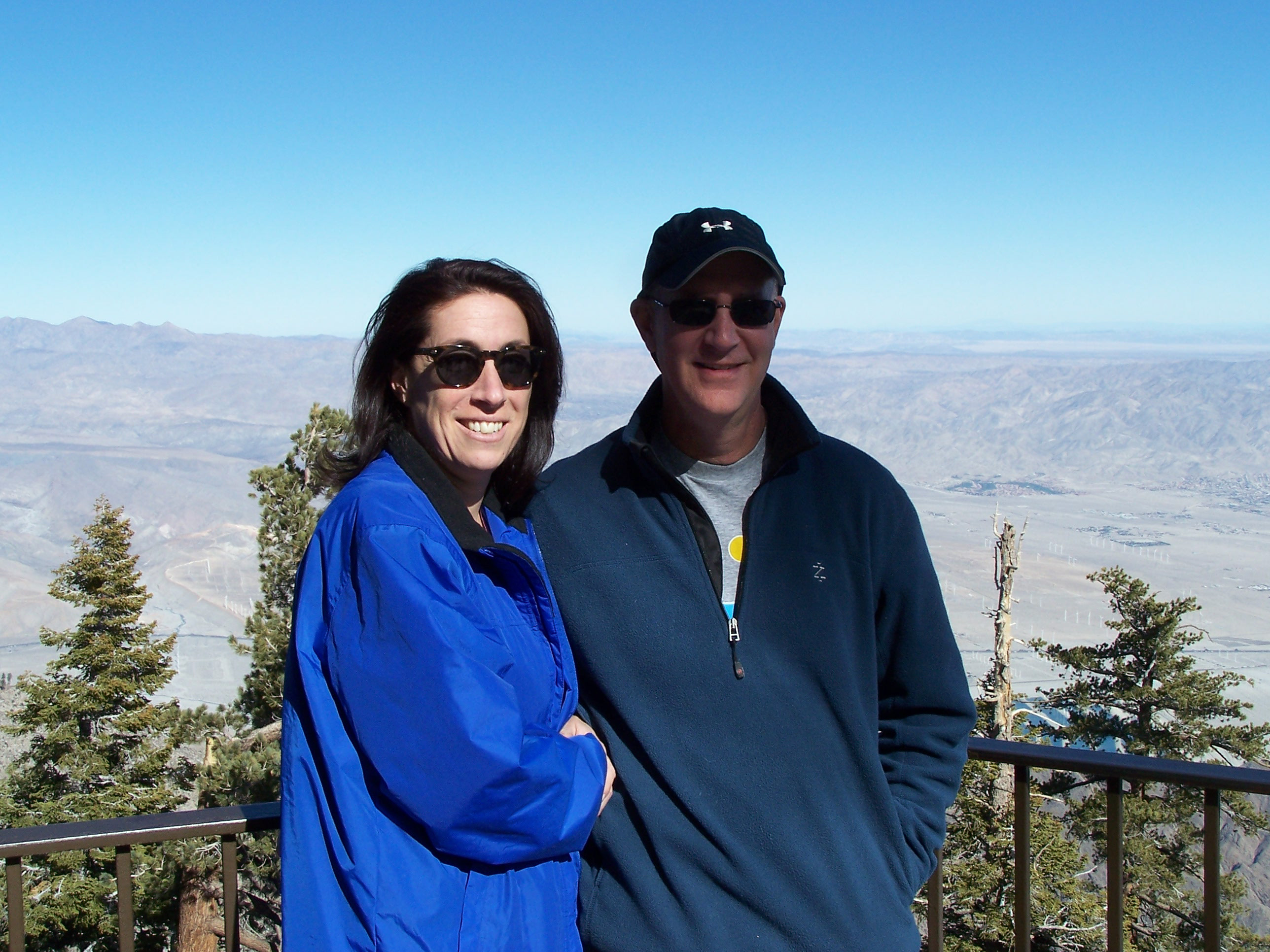
What was the most useful skill or knowledge that you got from the experience?
I think the most useful skill I received from the fellowship was to focus the way I write and communicate complex issues. As scientists we are often trained to exhaustively cover a topic an inch wide and mile deep. In working with policy, this level of coverage is a luxury that demands distilling an entire body of literature into a single bullet point on a memo (Oh, and by the way, the boss wants it yesterday!).
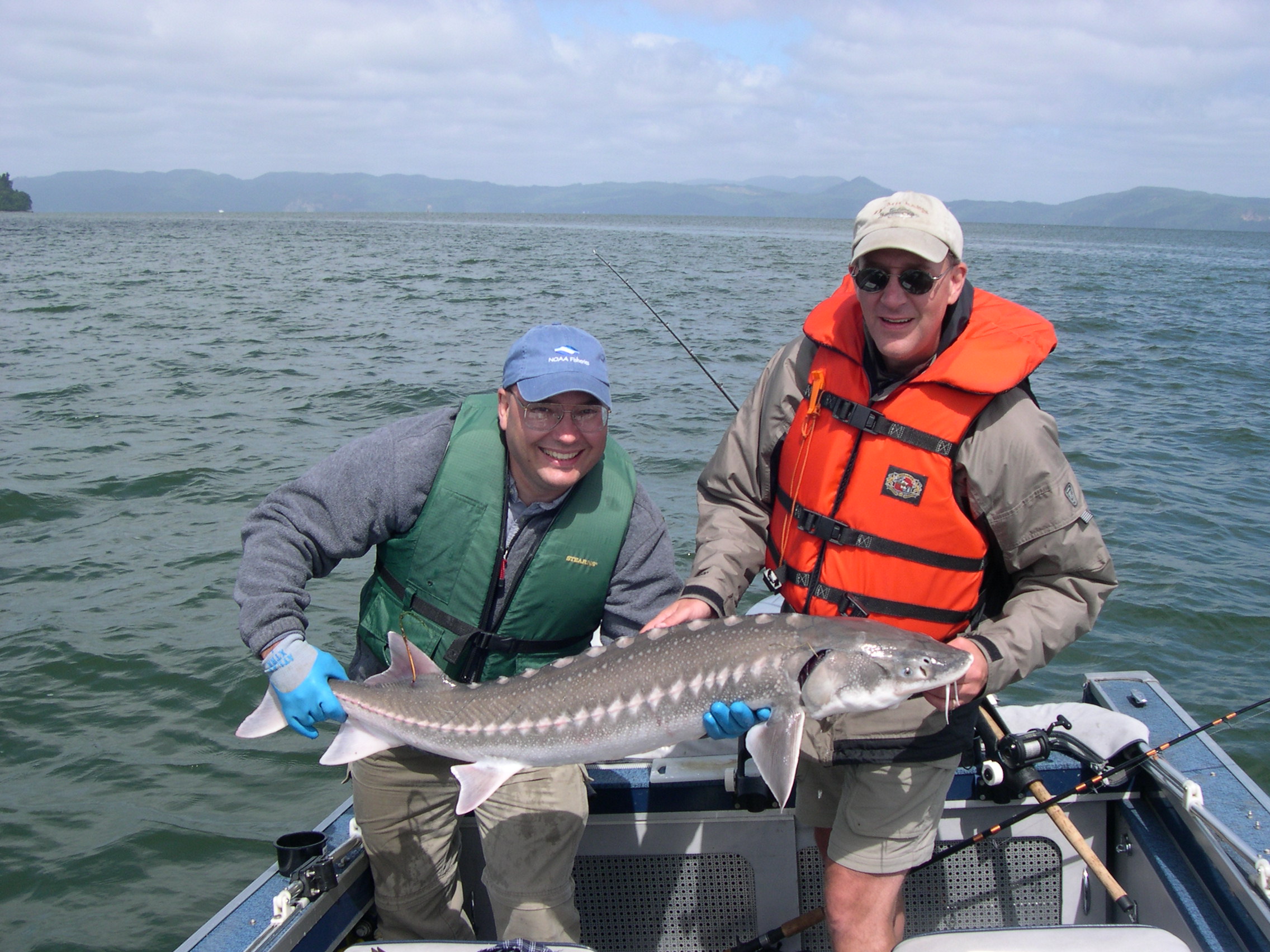
How has it played a role in your career or your life?
In many ways, the fellowship is a bit of an exclusive club. I mean this not in a snooty way that results from some greater virtue or qualification on my part, but rather in a way that having been part of the fellowship program carries a bit of cache. When I meet others who have been in the program, there is an immediate bond and acknowledgement that we were really part of something special—a unique opportunity and sideline pass for the total “D.C. experience.”
April 4th, 2016 by iisg_superadmin
Think about “weather” as the clothes you are wearing on any given day. “Climate,” on the other hand, is all the clothes in your closet.
Molly Woloszyn’s metaphor helps visitors at the Peggy Notebaert Nature Museum understand how today’s weather does not really tell us what is happening in terms of climate and climate change. It’s the first of many lessons and activities i n the exhibit Weather to Climate: Our Changing World, which opened on Saturday.
n the exhibit Weather to Climate: Our Changing World, which opened on Saturday.
The exhibit provides many hands-on ways to understand weather, climate, and climate change. For example, using a weather simulator, you can mix ingredients like wind, humidity, cloud cover and more to whip up a thunder storm or a tornado—or a sunny day, if you are so inclined. And visitors can stand in front of the green screen and try their hand at being an on-air meteorologist.
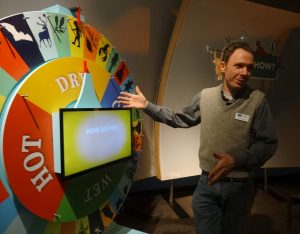 With the spin of a wheel, visitors can learn the impact of various climate scenarios on a variety of plants and animals, and they can create crazy new animals to cope with what may lie ahead. The exhibit journey wraps up with an opportunity to learn steps we can take to reduce our carbon footprint.
With the spin of a wheel, visitors can learn the impact of various climate scenarios on a variety of plants and animals, and they can create crazy new animals to cope with what may lie ahead. The exhibit journey wraps up with an opportunity to learn steps we can take to reduce our carbon footprint.
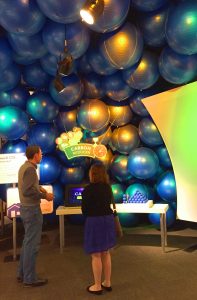 Woloszyn, IISG climate Extension specialist, who provided ideas and expertise to the exhibit development process, was on hand last week, along with Peggy Notebaert’s Steve Sullivan (pictured above) and Marc Miller to meet with reporters and introduce the exhibit.
Woloszyn, IISG climate Extension specialist, who provided ideas and expertise to the exhibit development process, was on hand last week, along with Peggy Notebaert’s Steve Sullivan (pictured above) and Marc Miller to meet with reporters and introduce the exhibit.
“The exhibit gives children and their caretakers a fun and interactive way to learn about weather, climate, and climate change–complex topics that are hopefully made easier to understand,” said Woloszyn (pictured below being interviewed). “The goal was to not only communicate the science and impacts on nature and humans, but to leave people with action they can take that can help our world by reducing their own carbon footprint.”
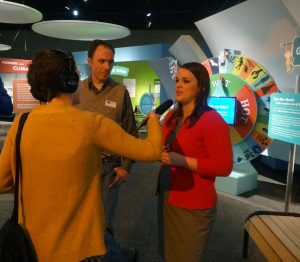
February 2nd, 2016 by iisg_superadmin
Illinois-Indiana Sea Grant is now a NOAA Weather-Ready Nation Ambassador as part of a national effort to improve the readiness, responsiveness, and overall resilience regarding extreme weather, water, and climate events.
The Weather-Ready Nation (WRN) initiative was formed in 2011 in response to deadly tornadoes that struck Joplin, Missouri and Birmingham, Alabama. At that point, the National Weather Service realized the need to better understand how to motivate people to respond to warnings.
 The goal of WRN is to save lives and livelihoods by providing better information for better decisions. NOAA is directing research to focus on improving scientific understanding of severe weather, developing new technologies, improving models, as well as addressing sociological challenges that may improve the likelihood people will take prompt action to save lives when they receive a warning.
The goal of WRN is to save lives and livelihoods by providing better information for better decisions. NOAA is directing research to focus on improving scientific understanding of severe weather, developing new technologies, improving models, as well as addressing sociological challenges that may improve the likelihood people will take prompt action to save lives when they receive a warning.
One groundbreaking WRN technological development is Wireless Emergency Alerts. Since 2012, these weather warnings go directly to WEA-capable cellphones—no sign up required. These alerts saved lives during the November 2013 tornado outbreak in Illinois.
The WRN plan involves the collective effort of the whole community, including other government agencies and emergency management, academia, the media, the insurance industry, non-profits, and the private sector. That’s where ambassadors come in.
Ambassadors are charged with being agents for change and leadership in a community—promoting WRN messages, engaging NOAA in potential collaborations, sharing success stories, and serving as an example by initiating workplace preparedness.
“Weather Ready Nation is a very important initiative for our country and I am happy that Illinois-Indiana Sea Grant is now a recognized ambassador,” said Molly Woloszyn, IISG Extension climate specialist. “A lot of the work that we do directly relates to the goals of the initiative, so this is a good opportunity to recognize that and to continue to explore how we can incorporate WRN and the National Weather Service into our efforts.”
Through Resilient Chicago, Woloszyn provides information for decision makers in the region to incorporate climate adaptation in local planning efforts. She is also leading a study to help critical facilities in Chicago, like hospitals, to assess their vulnerability to flooding and to adopt changes that reduce the risks.
January 12th, 2016 by iisg_superadmin
The Grand Calumet River in northwest Indiana, abused from centuries of industrial contamination, celebrated a triumphant milestone in October.
Volunteers, environmental organizers, and local, state, and federal politicians gathered to admire the incredible transformation of a river that was once drained of its ecological significance.
IISG Environmental Social Scientist
Caitie Nigrelli who led an outreach team to raise awareness about this enormous undertaking soaked it all in.
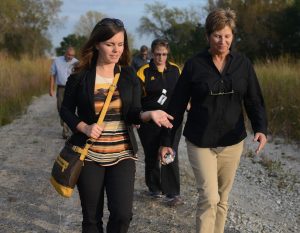 |
Caitie Nigrelli, left, and Diana Mally, an environmental
engineer with the U.S. EPA, walk by the river. |
“I’m enjoying the beautiful river,” Nigrelli said. “It‘s amazing because just a few years ago I was standing in the same spot, and it was contaminated. Now I look out and it is clean and beautiful.”
Nigrelli serves as a liaison between the U.S. Environment Protection Agency (EPA) and community stakeholders to promote awareness of the Grand Cal remediation through public meetings, tours, and events with school children.
The Grand Calumet was at rock bottom when the International Joint Commission designated it as an Area of Concern in 1987. Since then $159 million in combined state and U.S. EPA funds through the Great Lakes Legacy Act have thus far provided the means to clean it up.
Because of the extent of the work, the Grand Cal’s 13-mile system was divided into eight separate projects, with more milestones to come. This most recent event marked the completion of a 2-mile section from Kennedy Avenue to Cline Avenue at a cost of $82 million. The money went toward remediating 1.1 million cubic yards of contaminated sediment, restoring 58 acres of marsh habitat, and installing more than 170,000 plants.
This effort not only remediated sediment, but also removed invasive species like Phragmites that had overrun dune and swale habitat, crowding out native plants.
The federal funding, while generous, comes with a significant stipulation: Local partners must match at least 35 percent of the cost of remediation. The Indiana Departments of Natural Resources and Environmental Management footed the bill with money from a Natural Resource Damage Assessment involving eight industries.
 |
| Lee Botts |
Kris Krouse, Shirley Heinze Land Trust executive director, said, “From our perspective as an organization, it is probably one of the most spectacular and monumental achievements when it comes to land conservation.”
Octogenarian
Lee Botts, a prominent Great Lakes environmental activist since the 1960s, is making a film about the changes the south end of Lake Michigan is experiencing. She remembers questioning that any kind of restoration was ever going to happen.
“Amazing progress is being made by partnerships among all kinds of interests—some of whom in the past were enemies and opposed the conservation,” Botts said. “Now it’s a shared goal of all these interests. We’re making progress.”
Remediation on the next section starts next week—going west, it includes the city of Hammond and will go up to the Illinois border.
This story appears in the latest edition of The Helm.
January 6th, 2016 by iisg_superadmin
An IISG-funded researcher found that the mixture of pharmaceutical and personal care products (PPCPs) present in Lake Michigan can have significant negative effects on fathead minnow embryos.
Maria Sepúlveda, a Purdue University ecotoxicologist, is telling the next chapter on research of PPCPs in Lake Michigan. In 2011, Ball State researchers, also funded by IISG, examined the concentration and detection of pharmaceuticals in the nearshore waters in Lake Michigan.Sepúlveda chose to study two of the chemicals found in that study: triclocarban, a compound found in antibacterial soaps, lotions, and toothpaste, and cotinine, a metabolite of nicotine. Both of these chemicals find their way into Lake Michigan through sewage wastewater treatment effluent.
The researchers created realistic field concentrations in the laboratory, examining effects of the chemicals both individually and in a mixture. They also examined acute and chronic toxicity of field-observed levels of chemicals on four organisms from different parts of the food chain: green algae, diatoms, zooplankton (water flea, Daphnia magna), and fathead minnow embryos.
Medicines in Lake Michigan impact minnow embryos Sepúlveda found that when she tested the four organisms with individual compounds at levels similar to those found in Lake Michigan, they remained largely resistant with the exception of the fathead minnow embryo, which was slightly affected by the triclocarban. When she exposed the organisms at the bottom of the food chain— diatoms, zooplankton, and Daphnia magna—to the mixtures, they were not affected even at high levels. Yet the hours-old fathead minnow embryo proved to be significantly susceptible to the contaminants.
“This is not surprising since embryos are known to be more sensitive to most contaminants compared to adults,” said Sepulvida. “The fish embryos were more sensitive than anything else we tested. “We chose this species because there was no data in the literature and therefore our values are novel,” she added.
Research on PPCPs in Lake Michigan and the Great Lakes overall is limited, so she cautions that these results are very preliminary. “It would be ideal if we had more data from not just Lake Michigan, but from the Great Lakes in general. But there’s just not a lot of data on pharmaceuticals from the Great Lakes right now,” Sepúlveda said.
“There are over 200 pharmaceuticals that people look for all the time in surface water. It’s overwhelming when you start thinking about it. It’s very complicated to study in a lab or in the field.”
This story appears in the latest edition of The Helm.
December 17th, 2015 by iisg_superadmin
This has been a good year for Illinois-Indiana Sea Grant. Working with our many partners, big projects reached their culmination, in some cases providing researchers and decision makers new ways to access data. And the spotlight was turned on Lake Michigan for research and education. Here are10 important stories from 2015.
The year started with big research news that southern Lake Michigan has high concentrations of plastic microfibers, which are likely from clothing that sheds in the wash. This news was picked up by media outlets around the world, including the Associated Press, The New York Times, The Guardian, and the Chicago Tribune.
2015 saw the release of the
Illinois Nutrient Loss Reduction Strategy, which laid out a plan to reduce the flow of nutrients down the Mississippi River to the Gulf of Mexico. This strategy was developed with input from a range of stakeholders, including government agencies and agricultural producers.
Be a Hero is now the primary invasive species awareness campaign in Illinois. Recreational water users have heard this message, but now the campaign provides easy tips to help water gardeners, teachers, and aquarium hobbyists curb the spread of aquatic invaders. Plus, Be a Hero provides guidance to hunters, campers, and hikers to prevent the spread of species that threaten habitat on land.
The
Grand Calumet River in Indiana just keeps getting better. Another section of this long polluted waterway has been cleaned up through Great Lakes Legacy Act funding and that of many local and state partners. Remediation of the Kennedy to Cline Avenues section led to the removal of 1.1 million cubic yards of contaminated sediment.
Twice this year, it was Lake Michigan’s turn for ongoing projects that rotate yearly around the Great Lakes. First, the Lake Michigan
Cooperative Science and Monitoring Initiative (CSMI) brought together agencies and scientists to study the nearshore environment, which ultimately will help inform management decisions. CSMI is part of a larger binational effort to advance Great Lakes monitoring and research.
Second, this was the year for the
Shipboard Science Workshop on Lake Michigan, in which 15 teachers spent a week aboard the U.S. EPA
R/V Lake Guardian working with researchers and learning about Great Lakes science.
IISG has developed new tools to help scientists enhance their research and help decision makers, and others make informed choices. Great Lakes Monitoring is a web application that provides the means for environmental data from across the Great Lakes region to be just a click away.
For communities looking to set water prices smartly, the
Northeast Illinois Water and Wastewater Rates Dashboard allows them to compare rates with communities in the region that have similar characteristics. Setting the right price for water is the first step in managing water supplies sustainably.
In our latest issue of The Helm, we report on a tool under development for critical facilities in Cook County to
reduce flooding impacts. Through answering a series of questions, facilities managers can assess how the building might be vulnerable to flood damage, and how this risk can be addressed.
Finally, IISG installed a
second buoy in the waters of Lake Michigan. This one is off the shores of Wilmette, Illinois, joining the first one in the Indiana waters near Michigan City. These buoys provide key information to the National Weather Service, researchers, boaters, anglers, and beach goers alike.
As we look forward to 2016, we thank partners, stakeholders, and many others that we worked with and supported to achieve noteworthy goals.
December 15th, 2015 by iisg_superadmin
Flooding is always hard on a community, but when hospitals, mass transit, utilities, and others that impact the health and safety of residents are under water, these facilities may not be able to provide critical services or may even be forced to shut down. This leaves residents and businesses vulnerable to other threats and makes flood recovery ever more challenging.
The heart of the project is the Flood Vulnerability Assessment for Critical Facilities, which is an assessment tool. This set of questions will help Cook County managers determine a facility’s risk based on factors like its proximity to a flood plain, past flooding issues, stormwater drainage systems, and the location of key systems like back-up generators and computer servers. Facilities may also be able to use the tool to evaluate current emergency communication plans for heavy rainfall and determine whether improvements are necessary. After a pilot phase, the final assessment tool will be made available online for facilities beyond Cook County.
What’s more, to help managers plan with an eye on the future, the project team will use historic rainfall data and climate forecasts to pinpoint the frequency of heavy storms now and predict how that rate may change as the climate does. The Reducing Flooding Vulnerability of Chicago Critical Facilities project is led by Molly Woloszyn, IISG and MRCC extension climate specialist, and Beth Hall, MRCC director, with additional support from the
Coordinated Hazard Assessment and Mapping Program at the Illinois StateWater Survey. Funding is provided through the National Sea Grant Office as part of the Community Climate Adaptation Initiative, which is focused on helping communities prepare for climate change.
This story appears in the latest edition of The Helm.
December 14th, 2015 by iisg_superadmin
The latest edition of the
UpClose interview series takes readers behind-the-scenes of Great Lakes plastic research.
In 2012, chemist
Lorena Rios-Mendoza took part in the first-ever sampling of microplastics in the lakes, a project that revealed that Lake Erie has a higher concentration of minute particles than the Great Pacific Garbage Patch. Since then, she has led a number of studies to improve understanding of the chemicals that build up on the surface of microplastics and how photodegradation affects those chemicals and the plastics themselves.
UpClose with Lorena Rios-Mendoza is the tenth issue of the award-winning Q&A series that gives readers an insider’s view of research on emerging contaminants. The series kicked off in 2012 with
Timothy Strathmann, an environmental engineer at University of Illinois at Urbana-Champaign. Later editions featured the work of John Kelly, a microbiologist at Loyola University Chicago,
Rebecca Klaper, an ecologist at the University of Wisconsin-Milwaukee, and the U.S. Geological Survey’s
Dana Kolpin and
Barbara Mahler.
Each interview highlights a unique component of emerging contaminant research—everything from tracing their source to understanding how they impact aquatic life. Readers also learn about the complex, and sometimes tricky, process of conducting field studies and the potential implications of research on industries and regulations.


 Anne Stadler Vaillancourt, a leader of the Friends group, spoke at last week’s event and a number of members were there to set up, take down, and enjoy the festivities. The organization is enjoying success and is ready to grow in membership. They recently held a volunteer cleanup day at the park and more than 100 people showed up. They have two upcoming Weed Out events to remove invasive species on May 14 and May 28.
Anne Stadler Vaillancourt, a leader of the Friends group, spoke at last week’s event and a number of members were there to set up, take down, and enjoy the festivities. The organization is enjoying success and is ready to grow in membership. They recently held a volunteer cleanup day at the park and more than 100 people showed up. They have two upcoming Weed Out events to remove invasive species on May 14 and May 28.


 n the exhibit Weather to Climate: Our Changing World, which opened on Saturday.
n the exhibit Weather to Climate: Our Changing World, which opened on Saturday. With the spin of a wheel, visitors can learn the impact of various climate scenarios on a variety of plants and animals, and they can create crazy new animals to cope with what may lie ahead. The exhibit journey wraps up with an opportunity to learn steps we can take to reduce our carbon footprint.
With the spin of a wheel, visitors can learn the impact of various climate scenarios on a variety of plants and animals, and they can create crazy new animals to cope with what may lie ahead. The exhibit journey wraps up with an opportunity to learn steps we can take to reduce our carbon footprint. Woloszyn, IISG climate Extension specialist, who provided ideas and expertise to the exhibit development process, was on hand last week, along with Peggy Notebaert’s Steve Sullivan (pictured above) and Marc Miller to meet with reporters and introduce the exhibit.
Woloszyn, IISG climate Extension specialist, who provided ideas and expertise to the exhibit development process, was on hand last week, along with Peggy Notebaert’s Steve Sullivan (pictured above) and Marc Miller to meet with reporters and introduce the exhibit.


